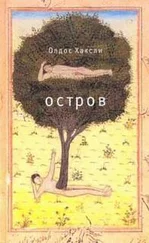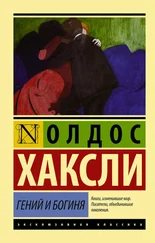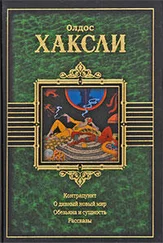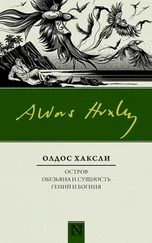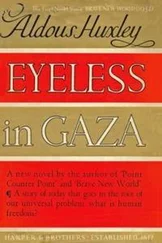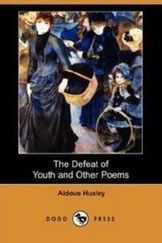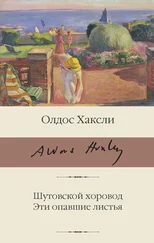All sorts of cultists and queer fish teach all kinds of techniques for achieving health, contentment, peace of mind; and for many of their hearers many of these techniques are demonstrably effective. But do we see respectable psychologists, philosophers and clergymen boldly descending into those odd and sometimes malodorous wells, at the bottom of which poor Truth is so often condemned to sit? Yet once more the answer is, No.
And now look at the history of mescalin research. Seventy years ago men of first–rate ability described the transcendental experiences which come to those who, in good health, under proper conditions and in the right spirit, take the drug. How many philosophers, how many theologians, how many professional educators have had the curiosity to open this Door in the Wall? The answer, for all practical purposes, is, None.
In a world where education is predominantly verbal, highly educated people find it all but impossible to pay serious attention to anything but words and notions. There is always money for, there are always doctorates in, the learned foolery of research into what, for scholars, is the all–important problem: Who influenced whom to say what when? Even in this age of technology the verbal Humanities are honoured. The non–verbal Humanities, the arts of being directly aware of the given facts of our existence, are almost completely ignored. A catalogue, a bibliography, a definitive edition of a third–rate versifier’s ipsissima verba , a stupendous index to end all indexes—any genuinely Alexandrian project is sure of approval and financial support. But when it comes to finding out how you and I, our children and grandchildren, may become more perceptive, more intensely aware of inward and outward reality, more open to the Spirit, less apt, by psychological malpractices, to make ourselves physically ill, and more capable of controlling our own autonomic nervous system—when it comes to any form of non–verbal education more fundamental (and more likely to be of some practical use) than Swedish Drill, no really respectable person in any really respectable university or church will do anything about it. Verbalists are suspicious of the non–verbal; rationalists fear the given, non–rational fact; intellectuals feel that ‘what we perceive by the eye (or in any other way) is foreign to us as such and need not impress us deeply.’ Besides, this matter of education in the non–verbal Humanities will not fit into any of the established pigeon–holes. It is not religion, not neurology, not gymnastics, not morality or civics, not even experimental psychology. This being so, the subject is, for academic and ecclesiastical purposes, nonexistent and may safely be ignored altogether or left, with a patronizing smile, to those whom the Pharisees of verbal orthodoxy call cranks, quacks, charlatans and unqualified amateurs.
‘I have always found,’ Blake wrote rather bitterly, ‘that Angels have the vanity to speak of themselves as the only wise. This they do with a confident insolence sprouting from systematic reasoning.’
Systematic reasoning is something we could not, as a species or as individuals, possibly do without. But neither, if we are to remain sane, can we possibly do without direct perception, the more unsystematic the better, of the inner and outer worlds into which we have been born. This given reality is an infinite which passes all understanding and yet admits of being directly and in some sort totally apprehended. It is a transcendence belonging to another order than the human, and yet it may be present to us as a felt immanence, an experienced participation. To be enlightened is to be aware, always, of total reality in its immanent otherness—to be aware of it and yet to remain in a condition to survive as an animal, to think and feel as a human being, to resort whenever expedient to systematic reasoning. Our goal is to discover that we have always been where we ought to be. Unhappily we make the task exceedingly difficult for ourselves. Meanwhile, however, there are gratuitous graces in the form of partial and fleeting realizations. Under a more realistic, a less exclusively verbal system of education than ours, every Angel (in Blake’s sense of that word) would be permitted as a sabbatical treat, would be urged and even, if necessary, compelled to take an occasional trip through some chemical Door in the Wall into the world of transcendental experience. If it terrified him, it would be unfortunate but probably salutary. If it brought him a brief but timeless illumination, so much the better. In either case the Angel might lose a little of the confident insolence sprouting from systematic reasoning and the consciousness of having read all the books.
Near the end of his life Aquinas experienced Infused Contemplation. Thereafter he refused to go back to work on his unfinished book. Compared with this everything he had read and argued about and written—Aristotle and the Sentences, the Questions, the Propositions, the majestic Summas—was no better than chaff or straw. For most intellectuals such a sit–down strike would be inadvisable, even morally wrong. But the Angelic Doctor had done more systematic reasoning than any twelve ordinary Angels, and was already ripe for death. He had earned the right, in those last months of his mortality, to turn from merely symbolic straw and chaff to the bread of actual and substantial Fact. For Angels of a lower order and with better prospects of longevity, there must be a return to the straw. But the man who comes back through the Door in the Wall will never be quite the same as the man who went out. He will be wiser but less cocksure, happier but less self–satisfied, humbler in acknowledging his ignorance yet better equipped to understand the relationship of words to things, of systematic reasoning to the unfathomable Mystery which it tries, forever vainly, to comprehend.
See the following papers:
Schizophrenia: A New Approach. By Humphry Osmond and John Smythies. Journal of Mental Science. Vol. xcviii. April 1952.
On Being Mad. By Humphry Osmond. Saskatchewan Psychiatric Services Journal. Vol. i. No. 2. September 1952.
The Mescalin Phenomena. By John Smythies. The British Journal for the Philosophy of Science. Vol. iii. February 1953.
Schizophrenia: A New Approach. By Abram Hoffer, Humphry Osmond and John Smythies. The Journal of Mental Science. Vol. c. No. 418. January 1954.
Numerous other papers on the biochemistry, pharmacology, psychology and neurophysiology of schizophrenia and the mescalin phenomena are in preparation.
In his monograph Menomini Peyotism , published (December 1952) in the Transactions of the American Philosophical Society, Professor J.S. Slotkin has written that ‘the habitual use of Peyote does not seem to produce any increased tolerance or dependence. I know many people who have been Peyotists for forty to fifty years. The amount of Peyote they use depends upon the solemnity of the occasion; in general they do not take any more Peyote now than they did years ago. Also, there is sometimes an interval of a month or more between rites, and they go without Peyote during this period without feeling any craving for it. Personally, even after a series of rites occurring on four successive weekends, I neither increased the amount of Peyote consumed nor felt any continued need for it.’ It is evidently with good reason that ‘Peyote has never been legally declared a narcotic, or its use prohibited by the federal government.’ However, ‘during the long history of Indian–white contact, white officials have usually tried to suppress the use of Peyote, because it has been conceived to violate their own mores. But these attempts have always failed.’ In a footnote Dr Slotkin adds that it is amazing to hear the fantastic stories about the effects of Peyote and the nature of the ritual, which are told by the white and Catholic Indian officials in the Menomini Reservation. None of them have had the slightest first–hand experience with the plant or with the religion, yet some fancy themselves to be authorities and write official reports on the subject.’
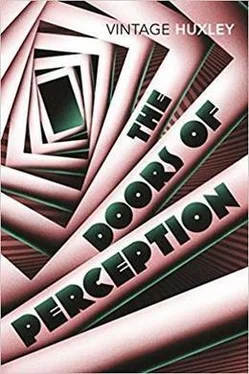
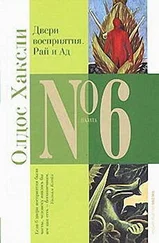

![Олдос Хаксли - О дивный новый мир [Прекрасный новый мир]](/books/11834/oldos-haksli-o-divnyj-novyj-mir-prekrasnyj-novyj-thumb.webp)
